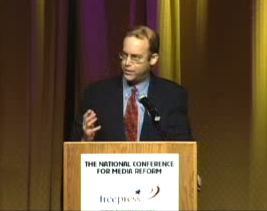An Army of Thousands More: How PR Firms and Major Media Help Military Recruiters

Increasing "the ranks of our military" is "one of the first steps we can take together" to "position America to meet every challenge that confronts us," said President Bush in last week's State of the Union address. "Tonight I ask the Congress to authorize an increase in the size of our active Army and Marine Corps by 92,000 in the next five years."
The 92,000 figure was put forward by Defense Secretary Robert Gates, who told the Senate Armed Services Committee on January 12 that more troops are needed to boost "combat capability" and "strengthen our military for the long war against terrorism." The Pentagon plans to meet that goal by reenlisting former Marines and increasing the Army's recruitment and retention rates.
Under the plan, the Army would only "slightly increase its recruitment goals -- by 2,000 to 3,000" a year, according to UPI. But in 2005, "the Army failed to meet its annual recruiting goal by the widest margin in two decades," reported the New York Times. To meet its 2006 goal, the Army hired more recruiters, raised the maximum allowable age for recruits, doubled the percentage of recruits who scored low on aptitude tests, issued waivers for some recruits' prior convictions, and significantly increased cash bonuses.
If it was that difficult for the Army to meet past recruiting goals, how will it meet future, larger ones? Some clues are offered in the Army's self-nomination for a prestigious public relations award.

 "Media democracy" is a term that everyone defines a little differently.
"Media democracy" is a term that everyone defines a little differently.
